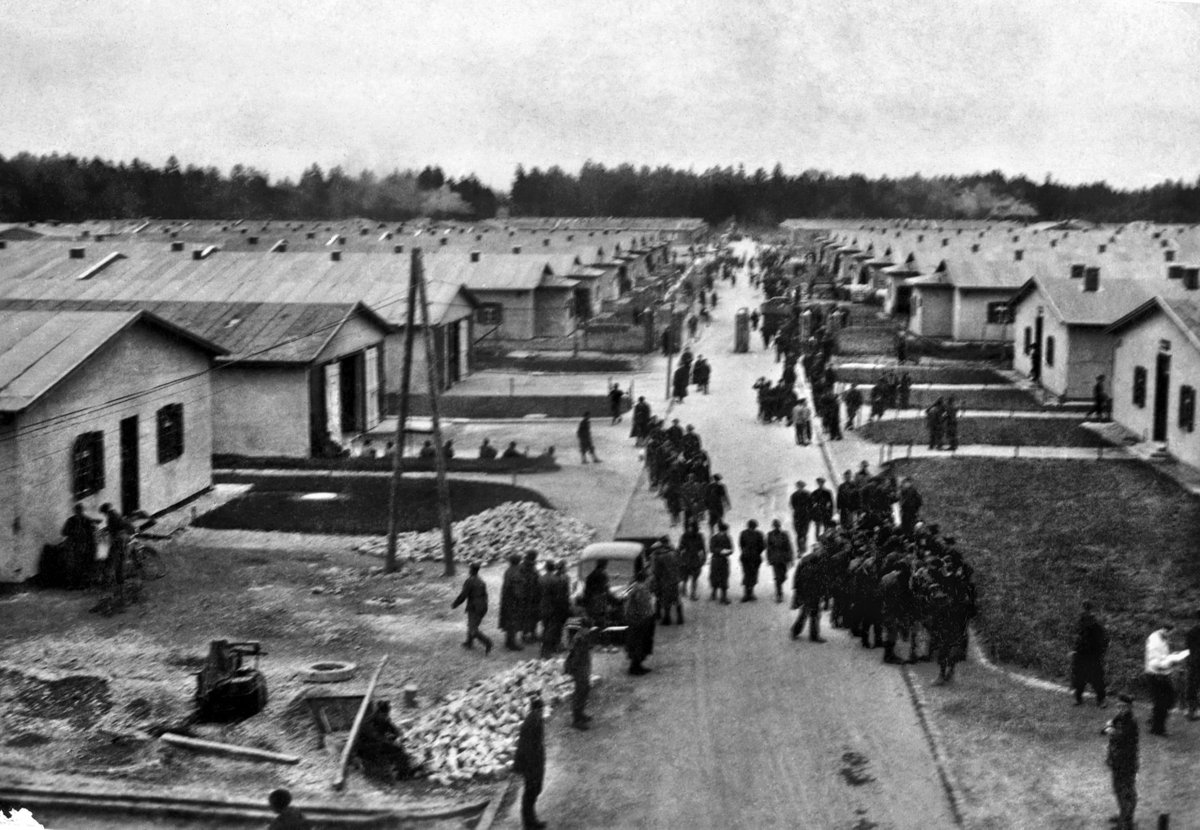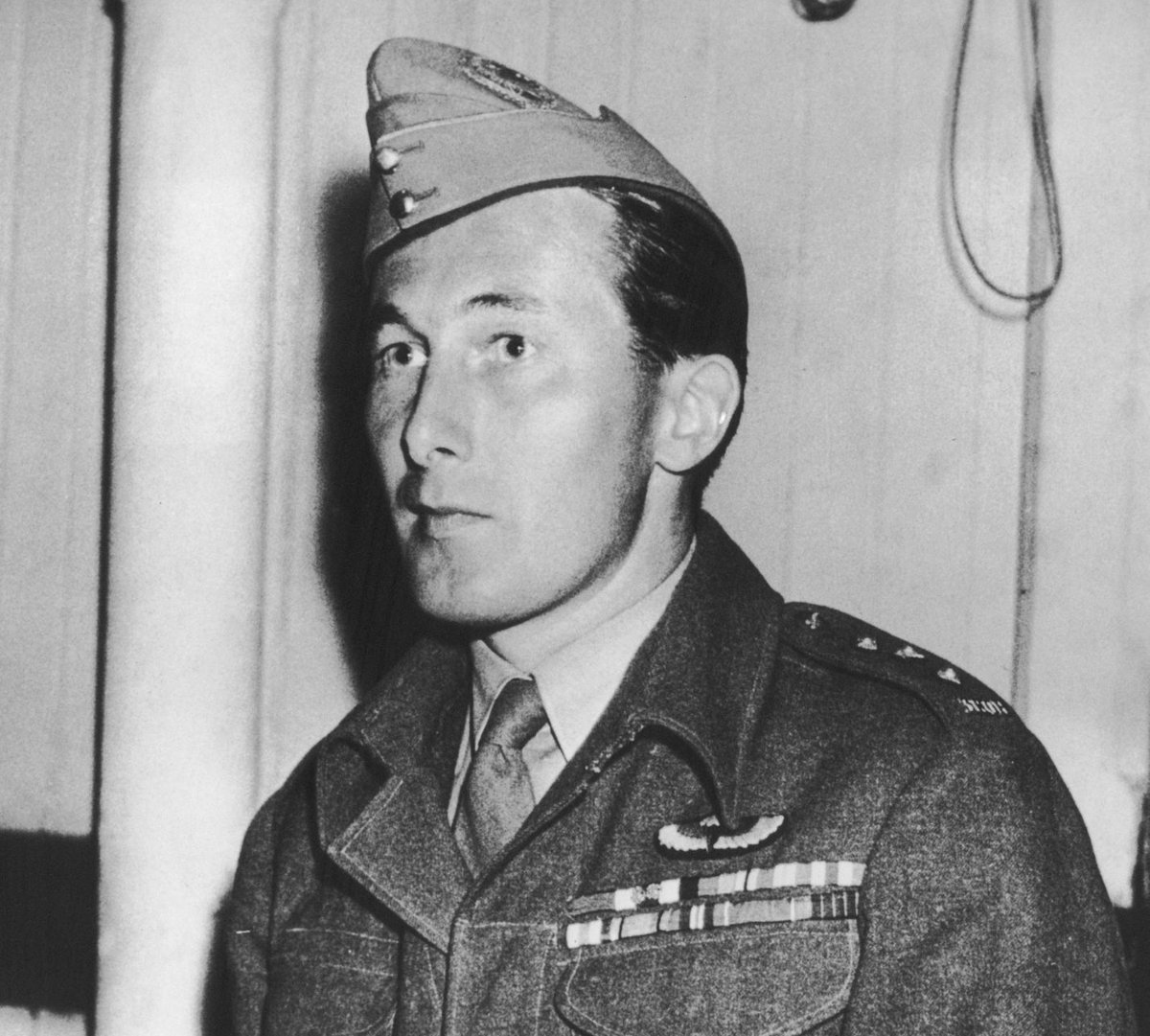1/
There’s hard, and then there is Austin Hehir.
Researching my history of 2SAS I came across the ironman Irishman from County Clare.
This is his story.
Let me know if you reckon you could have beaten him in an arm wrestle.
I don’t have a photo but here are some 2SAS boys
There’s hard, and then there is Austin Hehir.
Researching my history of 2SAS I came across the ironman Irishman from County Clare.
This is his story.
Let me know if you reckon you could have beaten him in an arm wrestle.
I don’t have a photo but here are some 2SAS boys

2/
On January 7 1944 Hehir jumped into Italy, one of five men under Lt David Worcester on Operation Maple. They marched for 3 days in temps of minus 15 and through thick snow to their operating area near Orte. They had soon derailed a train & then began targeting road traffic.
On January 7 1944 Hehir jumped into Italy, one of five men under Lt David Worcester on Operation Maple. They marched for 3 days in temps of minus 15 and through thick snow to their operating area near Orte. They had soon derailed a train & then began targeting road traffic.
3/
Over 10 days they destroyed or damaged 25 vehicles, throwing their bombs as the targets slowed on snowy roads to take corners. When they had run out of explosives, Hehir devised a new method of eliminating enemy staff cars, as Worcester described:
Over 10 days they destroyed or damaged 25 vehicles, throwing their bombs as the targets slowed on snowy roads to take corners. When they had run out of explosives, Hehir devised a new method of eliminating enemy staff cars, as Worcester described:
4/
"He drew his two revolvers & walked up the road firing at the car which was approaching at about 30 miles an hour. The car stopped & both its occupants were killed."
Hehir did it again 2 days later.
Worcester then split his party & they made their way towards Allied lines.
"He drew his two revolvers & walked up the road firing at the car which was approaching at about 30 miles an hour. The car stopped & both its occupants were killed."
Hehir did it again 2 days later.
Worcester then split his party & they made their way towards Allied lines.
5/
Worcester went with Hehir, together with an escaped POW they’d picked up called Cobley. They headed south. "We were very short of food but in spite of this we did some hard marching, covering about 25 miles a day (one day we covered 38 miles)," noted Worcester.
Worcester went with Hehir, together with an escaped POW they’d picked up called Cobley. They headed south. "We were very short of food but in spite of this we did some hard marching, covering about 25 miles a day (one day we covered 38 miles)," noted Worcester.
6/
In the early hours of March they were captured by a German patrol.
After a cursory interrogation the 3 prisoners were left in a room with five middle-aged Germans guards.
Worcester & Hehir agreed they might as well take them on.
It all kicked off at 6am.
In the early hours of March they were captured by a German patrol.
After a cursory interrogation the 3 prisoners were left in a room with five middle-aged Germans guards.
Worcester & Hehir agreed they might as well take them on.
It all kicked off at 6am.
7/
Hehir asked for some water & with the bottle he knocked out a guard. Worcester lunged at another but was shot in the leg. “I saw Cobley go down with 2 Germans on top of him,” said Worcester. “Hehir was hit twice, first in the arm and then the leg, but kept fighting...
Hehir asked for some water & with the bottle he knocked out a guard. Worcester lunged at another but was shot in the leg. “I saw Cobley go down with 2 Germans on top of him,” said Worcester. “Hehir was hit twice, first in the arm and then the leg, but kept fighting...
8/
…Eventually a German stood over him as he lay on the floor & emptied the whole magazine from the Schmeisser at him. Fortunately only four bullets hit him in the stomach. I thought Hehir was dying. We were laid on the bed and I managed to give Hehir morphine."
…Eventually a German stood over him as he lay on the floor & emptied the whole magazine from the Schmeisser at him. Fortunately only four bullets hit him in the stomach. I thought Hehir was dying. We were laid on the bed and I managed to give Hehir morphine."
9/
All 3 survived captivity. Hehir received the MM.
The citation noted he had escaped 4 times, only to be recaptured: “On one of these occasions he was again wounded in the back. Finally, in April 1945 in spite of ill-health, Hehir succeeded in escaping from Stalag 7 (pic)...
All 3 survived captivity. Hehir received the MM.
The citation noted he had escaped 4 times, only to be recaptured: “On one of these occasions he was again wounded in the back. Finally, in April 1945 in spite of ill-health, Hehir succeeded in escaping from Stalag 7 (pic)...

10/
… in Moosburg & reached an advanced US unit after a march of a fortnight. He obtained arms & continued to fight with this unit up to Linz until the Armistice. Pte Hehir’s conduct both during & subsequent to this operation showed a devotion to duty which never wavered."
… in Moosburg & reached an advanced US unit after a march of a fortnight. He obtained arms & continued to fight with this unit up to Linz until the Armistice. Pte Hehir’s conduct both during & subsequent to this operation showed a devotion to duty which never wavered."
12/12
Hard. As. Nails.
If anyone has any details about Hehir, particularly a photo I’d be grateful. I’d love to include one in the book.
He was in the Royal Artillery before joining 2SAS & may have come from Lahinch in Cty Clare.
Hard. As. Nails.
If anyone has any details about Hehir, particularly a photo I’d be grateful. I’d love to include one in the book.
He was in the Royal Artillery before joining 2SAS & may have come from Lahinch in Cty Clare.
@threadreaderapp unroll
• • •
Missing some Tweet in this thread? You can try to
force a refresh

 Read on Twitter
Read on Twitter














